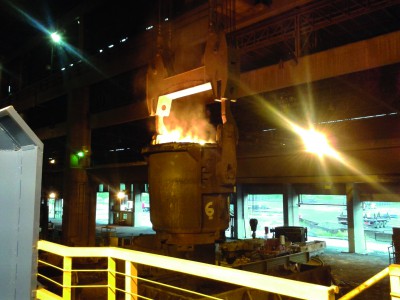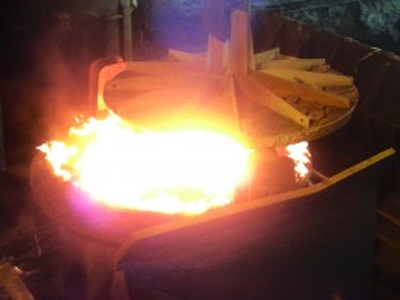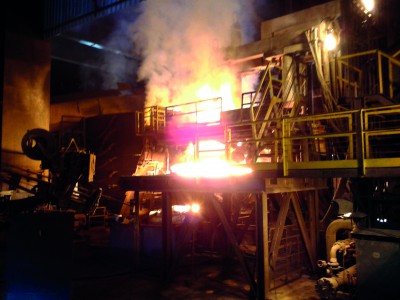Mejora del control de un horno de cuchara de 50 toneladas
Votorantim (currently ArcelorMittal) contracted Russula to perform an electrical and control upgrade for the EAF, part of the Barra Mansa Unit, in Rio de Janeiro, Brazil. The plant, which started production in 1937, has a capacity of 750,000 tons per year comprising armored-concrete rebars, wires, angles, profiles, mesh, latticework, and carbon-steel wire rod destined to cold lamination and drawing.
Prior to the revamp, the lime and alloy additions were installed on the same PLC as the ladle furnace. This meant that during the ladle furnace maintenance shutdown, the lime and alloys could not be added to the EAFs. Russula proposed to Votorantim to separate the additions and ladle furnace functionality to give greater operating flexibility.
Scope of Supply
The control scope of supply to upgrade the ladle furnace control system consisted of:
Russula developed the control system to perform optimal electrode control. Accurate electrode control in the ladle furnace is important to:
Minimize the overload duration from short circuits through the molten steel
Minimize energy consumption and especially reactive power
Minimize the use of electrodes
Project Execution
Before the official start-up, the Russula team accumulated hours of data demonstrating the furnace behavior. This allowed the team to set up and adjust many of the control loops beforehand, ready for hot testing.
Meetings were held with the production management to execute the work during the preventive maintenance shutdowns. These stops were necessary to switch off the panel in order to identify the wiring. Four stops were made biweekly to check all the signals and cabling.
After the wiring was completely identified, the old PLC was exchanged with the new PLC that was already previously installed. The control room was remodeled to receive the new operating stations, only keeping the main operating desk.
The new electrical cabinets were built with four doors, two doors for the ladle furnace and two doors for the lime and alloys addition; thereby facilitating the maintenance of the equipment. During the scheduled downtime, the reconnection of the wiring was carried out quickly and without incidence of errors. A new fiber optic network was built during previously scheduled downtimes to ensure that there would not be communication problems during testing and operation.
Russula was responsible for all commissioning of the new ladle furnace control and lime and alloy addition control. Due to coordinated planning with the Votorantim Barra Mansa plant, the commissioning activities and start-up occurred on schedule. Even with the complex control of the electrodes, no problems occurred throughout the commissioning.



Results
The results of the previous efforts were easily seen when the first melt was processing in the ladle furnace with absolutely no failures. Shortly after implementing the new electrode control, the ladle furnace has been operating smoothly since the first test operation. This was due to great project planning and testing to install the new system, which began during monthly maintenance shutdowns, long before the official shutdown.
Customer participation and support was instrumental in this success during all stages of the project. Especially in the support of the initiative to have a full testing program before hot testing. A short time after the revamp, the ladle furnace was producing at a normal rate.